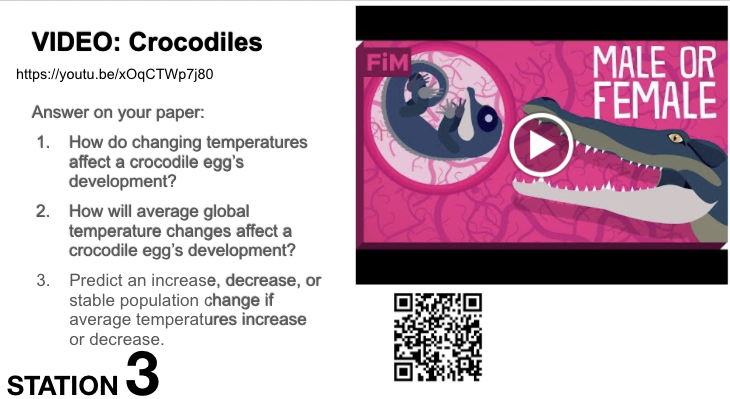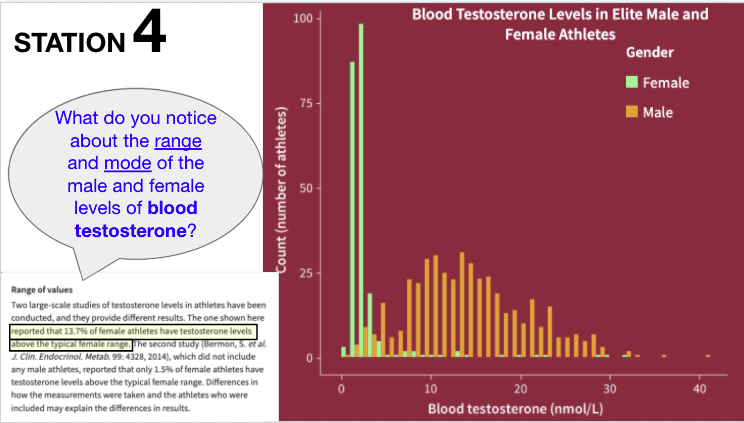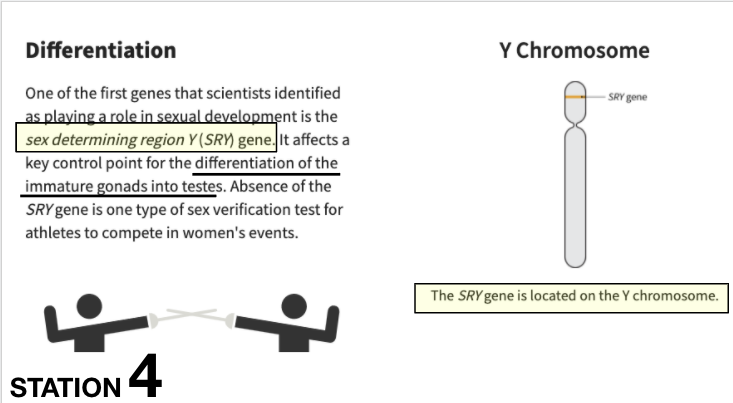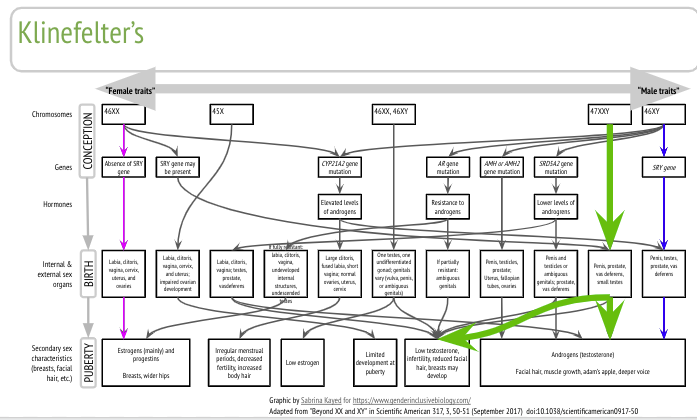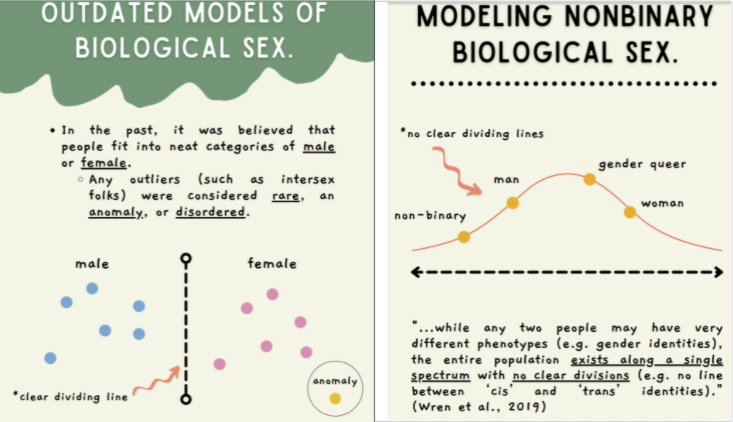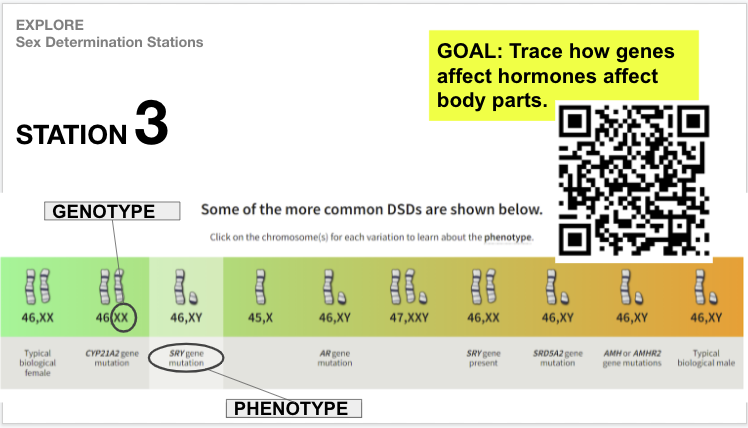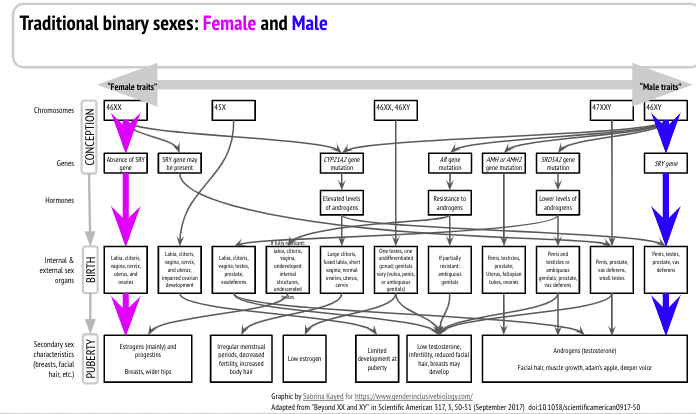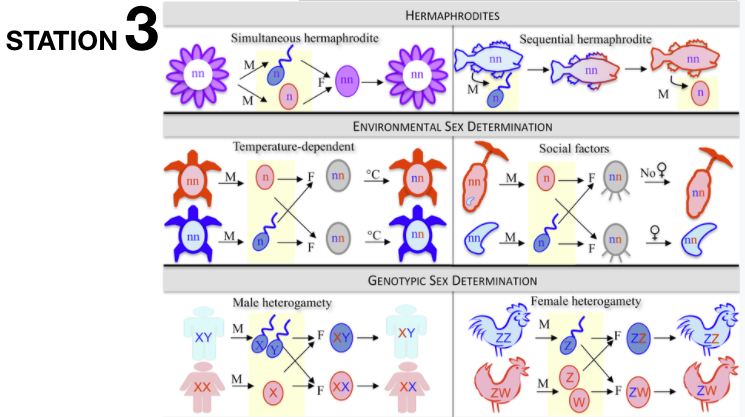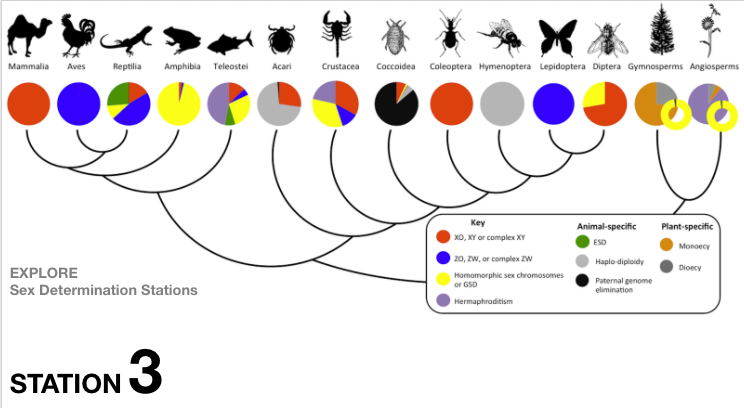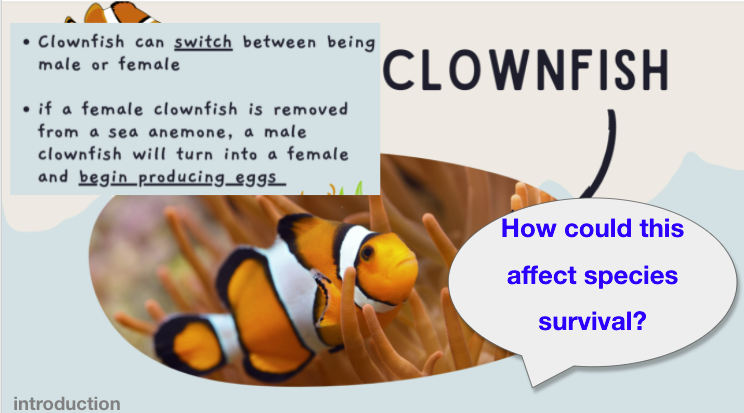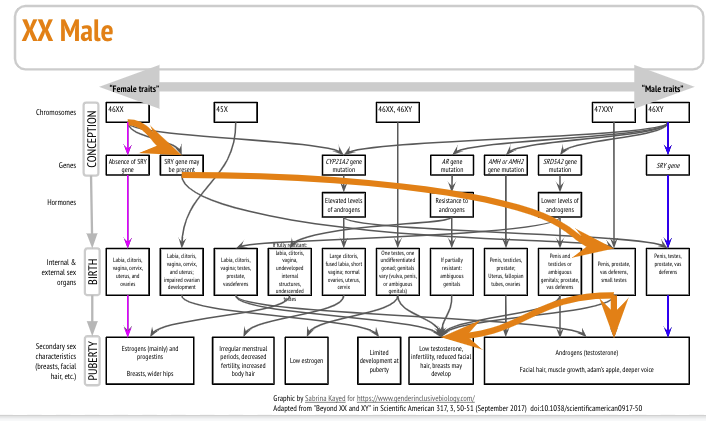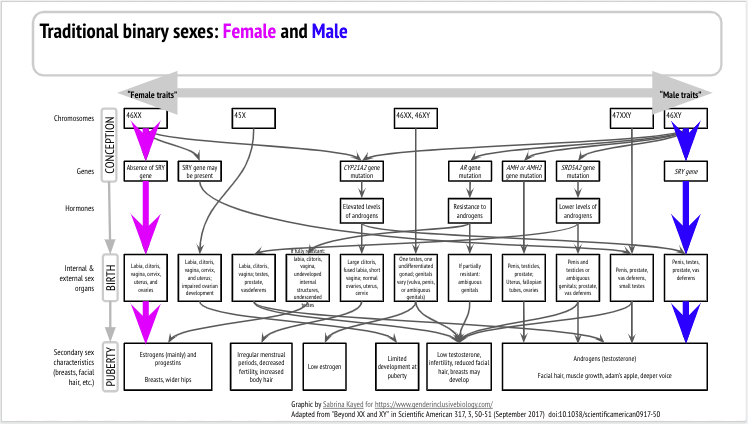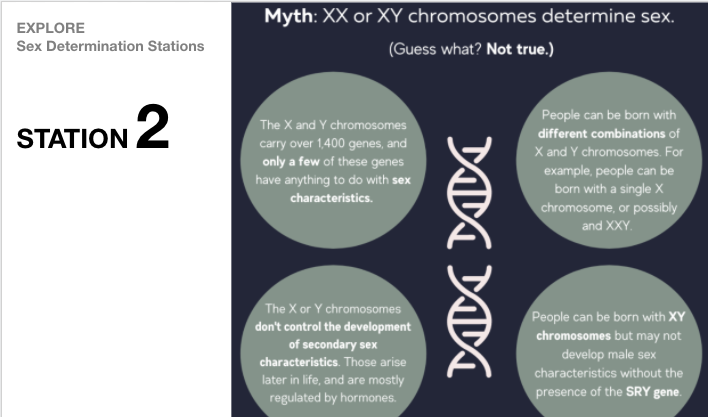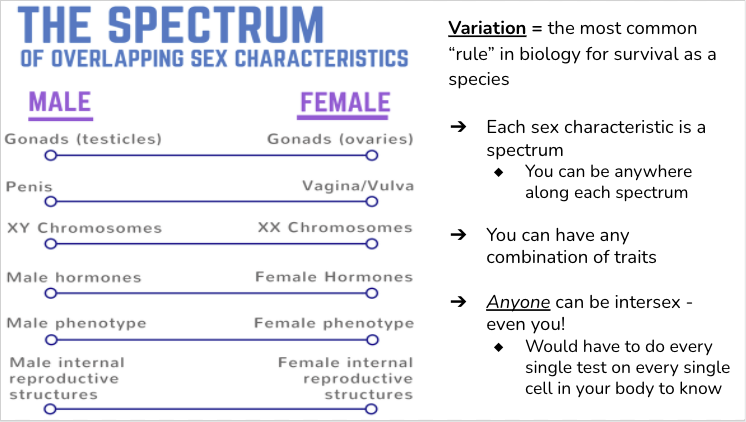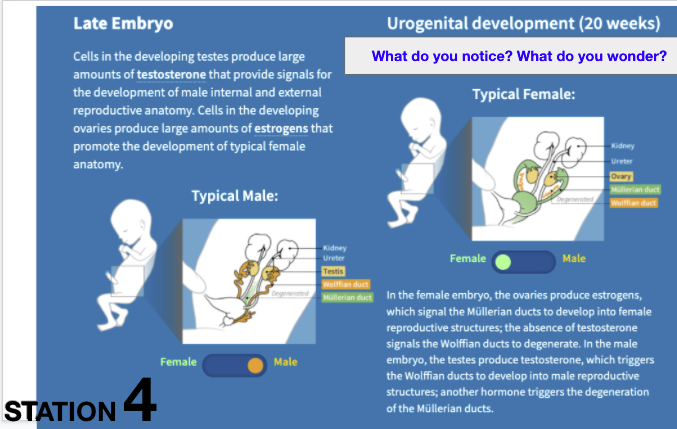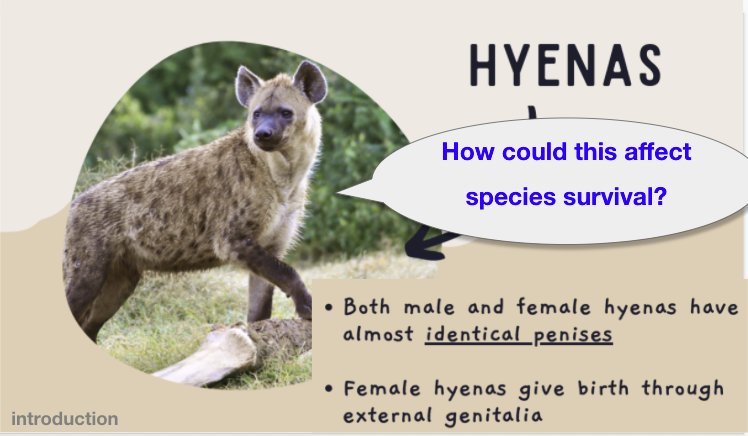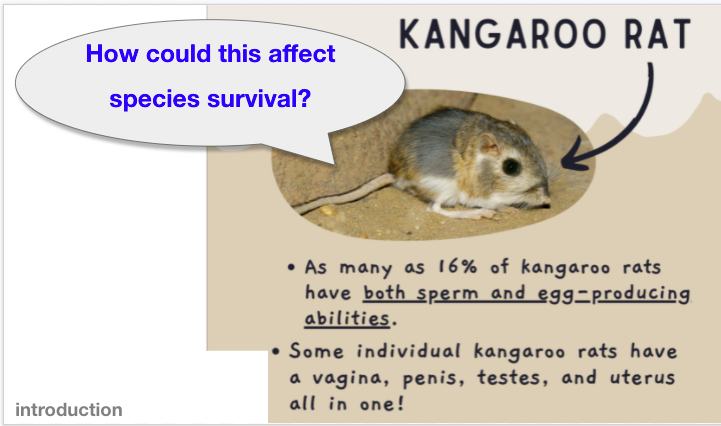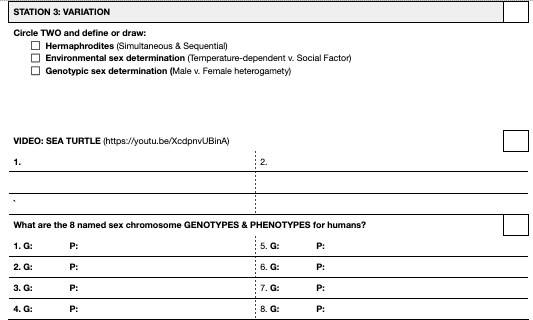Stations: Sex Determination (Explore)
Before this lesson: melanin & folate for survival of allelic diversity, then Pigeonetics to open up complex inheritance, then give KWL for sex diversity in nature
Task: Visit each station and answer questions on worksheet.
Stations topics:
Science, Sex, and Society
(Spoken Check for Understanding: How has the scientific model for biological sex changed?)
Myths and Misconceptions
(Spoken Check for Understanding: Who do you think should be heard from the most in conversations about sex and gender?)
Variation
(Spoken Check for Understanding: What have you learned and what information could improve your understanding?)
SRY Gene and Testosterone
(Spoken Check for Understanding: Are sports rules for fairness or entertainment? How do you think we should decide who gets to play and why?)
Introductory slides and previews, as well as printable slides for the stations. Feel free to distribute and modify. Fill-in-the-blanks sections has the first letter as the clue.
Download Links
Previews
Excerpts from Stations and Introduction Slides
Worksheet Tasks by Station w/ checkboxes & self-inventory
References
Queer Sex Ed, Sex Diversity in Nature
Queer Sex Ed, Science, Sex, and Society
Queer Sex Ed, Deconstructing the Biological Gender Binary
“Beyond XX and XY”, Scientific American 317, 3, 50-1 (September 2017) doi:10.1038/scientificamerican0917-50
Sabrina Kayed, Sex Determination and Non-Disjunction Lesson, for Gender-Inclusive Biology, https://www.genderinclusivebiology.com/newsletter/sex-determination-and-non-disjunction-lesson-by-sabrina-kayed.
